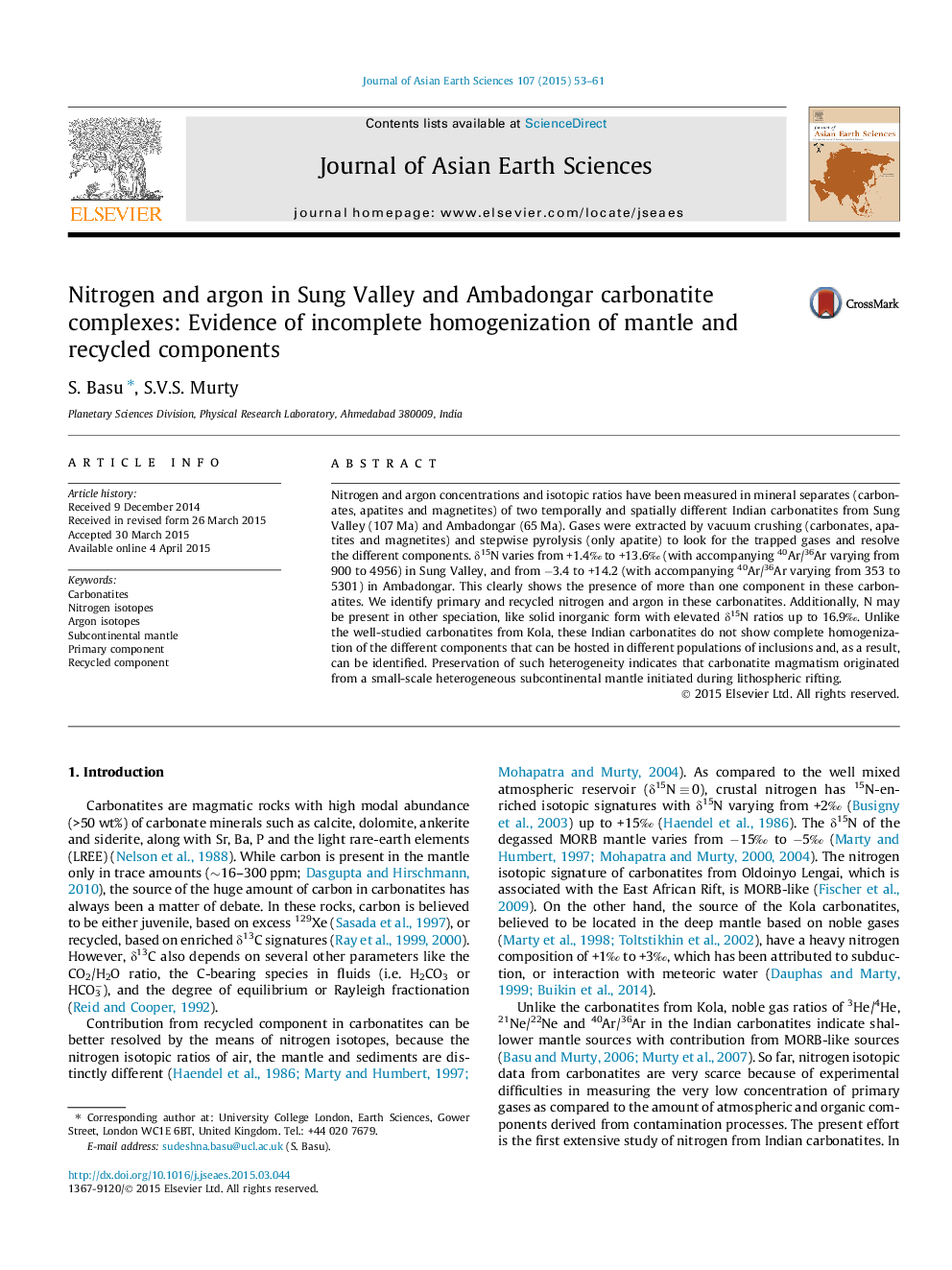| Article ID | Journal | Published Year | Pages | File Type |
|---|---|---|---|---|
| 4730377 | Journal of Asian Earth Sciences | 2015 | 9 Pages |
•Recycled nitrogen and argon present in Sung Valley and Ambadonar carbonatites.•Primary signatures of nitrogen can be identified in Ambadongar.•A solid inorganic form of nitrogen is also present.•These carbonatites lack complete homogenisation of the different components.•The components are hosted in the mineral matrix and different inclusions.•Carbonatitic magmatism originated from a small-scale heterogeneous mantle.
Nitrogen and argon concentrations and isotopic ratios have been measured in mineral separates (carbonates, apatites and magnetites) of two temporally and spatially different Indian carbonatites from Sung Valley (107 Ma) and Ambadongar (65 Ma). Gases were extracted by vacuum crushing (carbonates, apatites and magnetites) and stepwise pyrolysis (only apatite) to look for the trapped gases and resolve the different components. δ15N varies from +1.4‰ to +13.6‰ (with accompanying 40Ar/36Ar varying from 900 to 4956) in Sung Valley, and from −3.4 to +14.2 (with accompanying 40Ar/36Ar varying from 353 to 5301) in Ambadongar. This clearly shows the presence of more than one component in these carbonatites. We identify primary and recycled nitrogen and argon in these carbonatites. Additionally, N may be present in other speciation, like solid inorganic form with elevated δ15N ratios up to 16.9‰. Unlike the well-studied carbonatites from Kola, these Indian carbonatites do not show complete homogenization of the different components that can be hosted in different populations of inclusions and, as a result, can be identified. Preservation of such heterogeneity indicates that carbonatite magmatism originated from a small-scale heterogeneous subcontinental mantle initiated during lithospheric rifting.
Graphical abstractFigure optionsDownload full-size imageDownload as PowerPoint slide
